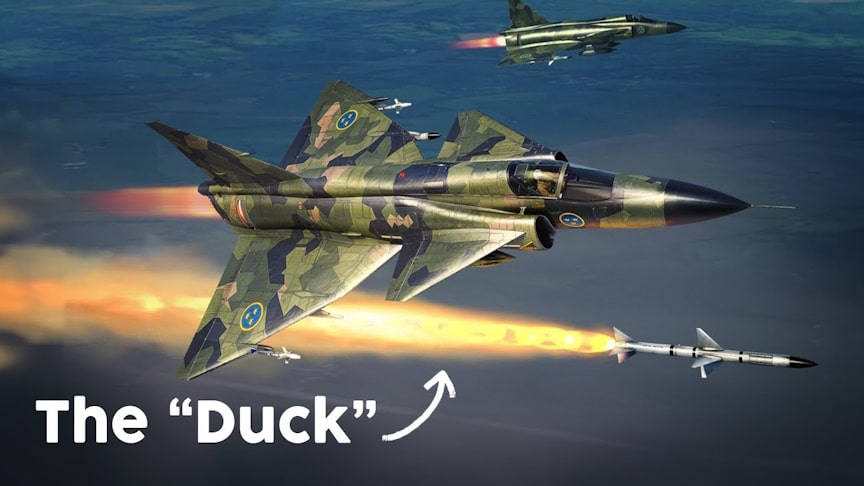The Saab 37 Viggen (The Tufted Duck, ambiguous with The Thunderbolt)[3] is a single-seat, single-engine multirole combat aircraft designed and produced by the Swedish aircraft manufacturer Saab. It was the first canard-equipped aircraft to be produced in quantity and the first to carry an airborne digital central computer with integrated circuits for its avionics, arguably making it the most modern/advanced combat aircraft in Europe at the time of introduction.
source.image: Found And Explained
The digital central computer was the first of its kind in the world, automating and taking over tasks previously requiring a navigator/copilot, facilitating handling in tactical situations where, among other things, high speeds and short decision times determined whether attacks would be successful or not, a system not surpassed until the introduction of the Panavia Tornado into operational service in 1981.
The Viggen was powered by a single Volvo RM8 turbofan. This was essentially a heavily modified licence-built variant of the Pratt & Whitney JT8D engine that powered commercial airliners of the 1960s, with an afterburner added for the Viggen.
Advertisement
The airframe also incorporated a thrust reverser to use during landings and land manoeuvres, which, combined with the aircraft having flight capabilities approaching a limited STOL-like performance, enabled operations from 500 m airstrips with minimal support. The thrust reverser could be pre-selected in the air to engage when the nose-wheel strut was compressed after touchdown via a pneumatic trigger.











